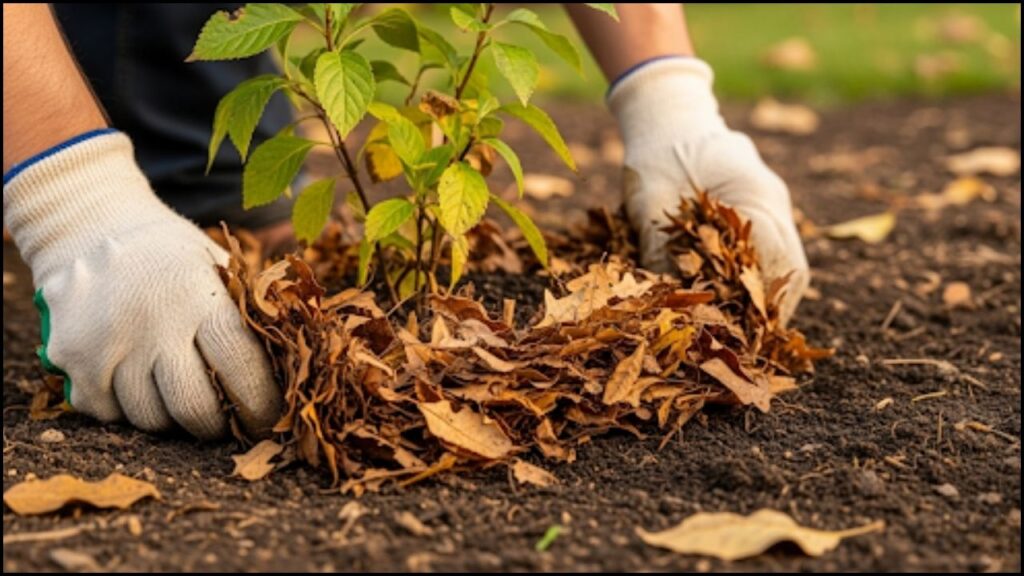
As autumn arrives and temperatures drop, gardeners worldwide are preparing their landscapes for the winter ahead. A critical practice for ensuring plant health and robust growth next spring is the application of fall mulch, a process known as Mulch in Fall for Better Plants. This protective layer insulates roots, retains moisture, and provides vital nutrients. Mulching in the fall is particularly beneficial for several specific plants that can be sensitive to harsh winter conditions.
Understanding the Role of Fall Mulch
Fall mulch plays a dual role in garden maintenance, serving both as a protective barrier and a soil amendment. As winter approaches, fluctuating temperatures can cause the ground to repeatedly freeze and thaw, a process known as frost heaving. This action can push plants, especially newly planted perennials and young shrubs, out of the soil, exposing their roots to damaging cold air. A layer of mulch, typically 2 to 4 inches thick, acts as an insulator, maintaining a more consistent soil temperature and preventing this heaving.
Furthermore, organic mulches like shredded bark or compost gradually break down over the winter. This decomposition enriches the soil, adding essential organic matter and nutrients that will be available for plants when they begin to grow again in the spring. This process also improves soil structure, enhancing drainage and aeration. According to Dr. Linda Chalker-Scott, a horticulture specialist at Washington State University, “fall mulching is not just about aesthetics; it’s a critical strategy for root health and long-term plant viability.”
The Importance of Timing and Material
The timing for applying fall mulch is crucial. It is best applied after the ground has started to cool but before it has frozen solid. This typically occurs after the first hard frost. Applying mulch too early can trap residual summer heat and moisture, which could lead to fungal growth or pest problems. Materials are also important. Organic mulches are preferred for their soil-improving qualities. These include shredded leaves, pine needles, wood chips, and straw. Non-organic materials like plastic or stone do not provide the same insulation or soil enrichment benefits.

Mulch in Fall for Better Plants: Seven Key Plants to Prioritize
While many plants benefit from fall mulching, horticulture experts recommend prioritizing those that are most vulnerable to winter stress. Here are seven types of plants that are commonly mulched in the fall for superior performance in the spring.
1. Hostas
These popular shade perennials are known for their lush foliage. Fall mulching helps protect their dormant crowns and shallow root systems from the freeze-thaw cycle. A layer of shredded leaves or compost conserves moisture and insulates the delicate roots.
2. Roses
Roses, especially hybrid tea varieties, are susceptible to winter damage. Mulching the base of the plant, or “mounding,” helps protect the graft union—the most vulnerable part of the plant from extreme cold. Gardeners often use shredded bark or straw for this purpose, mounding it up to 8-10 inches high.
3. Hydrangeas
Certain varieties of hydrangeas, particularly bigleaf (Hydrangea macrophylla), form next year’s flower buds on old wood in late summer. A thick layer of mulch around the base insulates the roots and helps protect these developing buds from harsh winter temperatures, ensuring a better bloom display in the spring.
4. Newly Planted Perennials
Any perennial planted within the current year is more vulnerable than established plants. Their root systems are not yet robust enough to withstand the stress of winter. It helps prevent frost heaving and provides a stable environment for new plants to become established over the dormant season.
5. Strawberries
As low-lying plants, strawberries are highly susceptible to frost damage. Mulching with straw the source of their name is a traditional method for protecting strawberry plants. The mulch insulates the crowns and roots, preventing them from being damaged by freezing temperatures and ensuring a healthy crop next year.
6. Ornamental Grasses
While many ornamental grasses are hardy, their crowns and root zones can be sensitive to prolonged cold and moisture. A light layer of pine needles or wood chips around the base of the plant provides insulation and helps to improve drainage, preventing root rot from excessive winter moisture.
7. Blueberries and Other Fruiting Shrubs
Blueberry bushes and other fruiting shrubs, such as raspberries, benefit significantly from fall mulching. The mulch helps maintain consistent soil moisture and temperature, which is crucial for root health. It also enriches the soil with organic matter, a long-term benefit for these acid-loving plants.
Best Practices and Common Mistakes
Applying mulch correctly is as important as choosing the right material. Experts warn against common mistakes that can harm plants. A significant issue is “volcano mulching,” where a thick pile of mulch is mounded directly against the plant’s stem or trunk. According to the University of California Cooperative Extension, this practice can lead to moisture-related decay, fungal diseases, and create a habitat for pests like voles that can girdle the plant.
Instead, a “donut” or “ring” shape is recommended, leaving a space of several inches around the base of the plant’s stem. The mulch should be spread evenly at a consistent depth of 2 to 4 inches throughout the garden bed. This practice ensures all-over protection without suffocating the plant, such as proper depth and spacing, are essential for maximizing the benefits of Mulch in Fall for Better Plants.
Final Disclosure
The practice of Mulch in Fall for Better Plants is a cornerstone of proactive garden care, offering significant benefits that extend far beyond the winter months. By providing insulation, enriching the soil, and protecting vulnerable plants from the damaging effects of freeze-thaw cycles, a fall mulching strategy lays the groundwork for a healthier, more productive garden. This simple, yet effective, task ensures that gardens are not just surviving winter but are poised to thrive in the spring.
13 Types of Mulch You’re Probably Using Wrong—Here’s What Experts Say
